Best known for her breakthrough study on chimpanzees and her activist work around the world, today, Jane Goodall focuses her efforts as much on conserving the natural environment as helping the people who depend on it. She sat down with Capacity4dev to explain the link between the two.
Jane Goodall never really planned on becoming a scientist. “I went to Africa because I wanted to be with wild animals, write books about them. Besides, when I was growing up, girls didn’t really dream of being scientists – certainly not the kind I wanted to be,” she says. “You were a nurse or a teacher… a missionary’s wife – that probably would have brought me the closest to living among wild animals.”
Today, Goodall is arguably the world’s best known primatologist. Her breakthrough, decades-long study in Tanzania’s Gombe National Park has shed light on our closest living relatives – the chimpanzees – revealing that, like humans, chimps build tools, have unique personalities and even wage wars.
At 83, however, Goodall no longer works among the chimps of Gombe. Instead, she travels the world, never spending more than a few weeks in a single place, giving sold-out lectures on conservation and animal rights; all while overseeing a number of development projects and programmes.
Her work now focuses as much on people as it does on animals. You can’t help one without the other, she says: “Look around, it’s utterly shocking what we’ve done to our planet. Economic development always takes precedence over the natural world – but this natural world is what’s going to determine the future of our children.”
Reflecting on her life, she touches on the events that helped shape who she is today. There is 1957, when she met Dr Louis Leakey, a renowned palaeoanthropologist; and 1960, when he sent her to Tanzania to observe and record the chimpanzees. Then, there is the 1986 Understanding Chimps conference in Chicago, which she helped organise, that brought together chimpanzee specialists from across Africa.
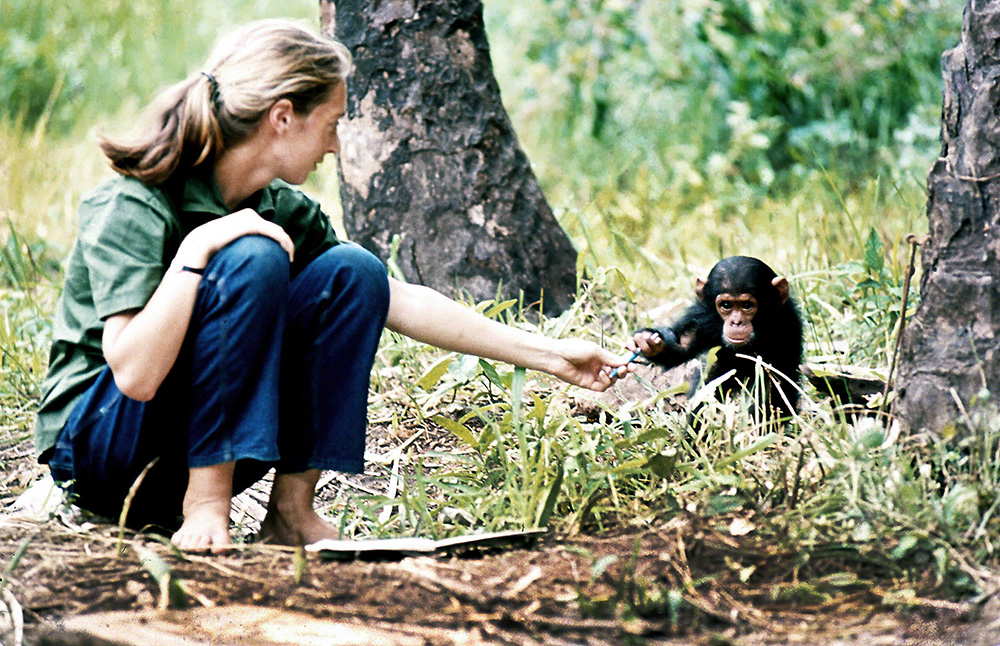
It was there that Goodall came to terms with the extent of environmental degradation affecting the region she had spent most of her life working in. “It was shocking,” she recalls. “We had a session on conservation, and, in every single case, forests were disappearing, chimpanzee numbers were plummeting. You know, when I started in 1960, I don’t think environmentalism was even a concept, but by the seventies, the real onslaught on the natural world began across Africa.”
The conference became a turning point in her life. “I went there as a scientist, and I left as an activist,” she says. “I decided I needed to do something to save the chimpanzees. I raised some money and visited all the countries where they still lived. I felt that if I were going to speak out about their situation, I had to witness it with my own eyes.”
She travelled to six different countries, learning about the increasing disruptions affecting the natural environment. She admits the tour also made her more attuned to the problems faced by her own kin: “Everywhere I went, I saw desperate poverty, the lack of educational and health facilities, the fierce competition for resources.”
Her focus, however, remained on the plight of the chimpanzees. Then, in 1990, Goodall flew over Gombe in a small, single-engine plane. Only thirty years earlier, when she first arrived in Africa, the park was part of an unbroken forest belt stretching from the eastern part of the continent all the way to the western coast.
“But as I looked down,” Goodall says, “I saw only a tiny island of forest, surrounded by completely bare hills. It was obvious that in their desperate effort to grow food for their families, the local people had to cut down whatever trees were left – they were simply too poor to buy food from elsewhere. And as I watched them push deeper into Gombe, I realised that if we didn’t do something to improve their lives, we couldn’t even try to help the chimpanzees.”
Taking care
With the help of Georg Strunden, an agricultural engineer with experience in international development, Goodall began drawing up plans to involve the local communities in her conservation efforts. “This was key,” she says. “Only with the active participation and endorsement of the people living around Gombe, could we ever dream of ensuring the survival of the chimpanzees and other wildlife.”
Jane Goodall on her transition from scientific work to environmental activism:
And so, in 1994, Goodall launched a programme to train and educate the local communities in sustainable natural-resource management. Today, the Lake Tanganyika Catchment Reforestation and Education Project – or TACARE – is active in 52 villages in six different countries, but the initial pilot was more modest, with 12 communities taking part.
“We secured a grant from the EU, and got to work,” Goodall says. “But instead of walking into the villages, like so many well-meaning, but arrogant white people, Georg picked a team of local Tanzanians. There wasn’t even a PhD among them, but they all worked with NGOs in forestry, education, health and so on.”
The group went into the villages and sat down with the elders to inquire about their communities’ most urgent needs. “And that’s where we started – providing more food, which meant restoring fertility to the overused farmland, and improving education and health facilities,” Goodall says. “Over time, as we gained the villagers’ trust, we were also able to introduce water management and microcredit programmes.”
The latter, she adds, “has been what I sincerely believe to be the most important intervention. I became passionate about microcredits after Muhammad Yunus – who pioneered their use – took me to Bangladesh where I met the women who have been helped with these tiny loans.”
Goodall decided that the microcredit would be provided to groups of five women, with each group working on an environmentally-sustainable project of their choice. “That was our only condition,” she says. “If they succeeded and paid back the money, then they could take out a bigger loan if they wished.”
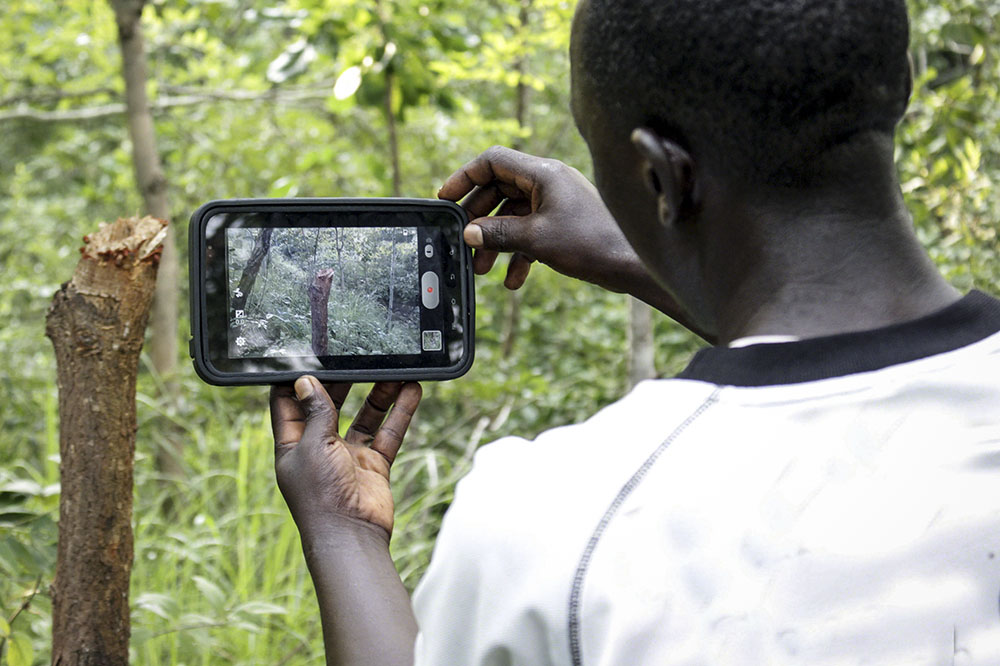
Why only women? “Two men could join, but they mostly didn’t, because they didn’t like to be outnumbered by women,” Goodall says, laughing.
The scheme, she adds, has proven hugely successful – but was not implemented on its own. “At the same time we were providing as many scholarships as we could to keep girls in school after puberty. To do that, it meant we had to find money to build hygienic latrines offering some privacy to the girls. We also provided family planning.”
Each of the villages selected up to two people to train as forest monitors. “Even if they can’t read or write, they learn to use smartphones or tablets, and, if they see an illegally cut tree or an animal trap, they press a button and take a photograph, which is then uploaded to a platform called Global Forest Watch,” Goodall says. “These people are so proud when they do it, because they feel responsibility for their forest.”
The focus is on transparency, she adds. “So the decision-makers in the villages can no longer pretend they don’t know what’s going on in the forest.”
According to Goodall, Tacare’s positive impact on the environment has been undeniable. “All around Gombe, the trees are coming back,” she says. “There are no more bare hills, and large areas have been set aside as buffer zones between the chimps and the villages. Down south, we’re using the same model to protect the forests that are still there.”
Stolen future
Despite the successes, Goodall holds no illusions that the natural environment in Africa is better off than when she started. “Across the continent, things are pretty grim,” she says. “The logging and mining companies are wreaking havoc. There is, of course, so much corruption.”
She looks down and closes her eyes. “Isn’t it bizarre that the most intelligent creatures to ever walk this planet are destroying their only home? It’s because we’ve allowed ourselves to get into this materialistic society, where we measure success in terms of money and power. Instead of caring about the sort of life you’re living, why can’t you just be happy, have time to enjoy nature and your family?”
|
The Jane Goodall Institute In 1977, Goodall founded the Jane Goodall Institute to expand the efforts on chimpanzee protection, conservation and environmental education. Headquartered in the United States, JGI oversees the Roots and Shoots and Tacare programmes, and has chapters in 25 countries around the world, including Belgium. To learn more about the events and actions organised by the Belgian chapter visit JGI Belgium or write to info@janegoodall.be. |
Since the 1986 conference, Goodall has travelled all over the world, spreading the message of protecting the natural environment. “And everywhere I went, I met young people who seemed to have lost all hope,” she says. “We always hear that we haven’t inherited this planet from our parents, we’ve borrowed it from our children. But we haven’t borrowed the future, we’ve stolen it. And we’re still stealing it.”
In 1991, Goodall founded the Roots and Shoots programme that teaches children about environmentalism. “Its message: every one of us makes an impact, every single day. And we have a choice as to what impact we’re going to make,” she says.
The young participants are encouraged to identify and work on environmental and social problems in their own communities, with support from teachers and parents. “Because what’s the point of working so hard, fighting for the environment, if we’re not raising new generations to be better stewards than we are,” Goodall says. “If we only listened to them, we’d realise that they know the problems and are so energetic about addressing them.”
Today, Roots and Shoots is active in more than 100 countries, and members range from pre-schoolers to university students. “Perhaps most significantly, I began introducing Roots and Shoots in China in the mid-nineties,” Goodall says. “At the time, there was virtually no other NGO there, but it began to spread like wildfire.
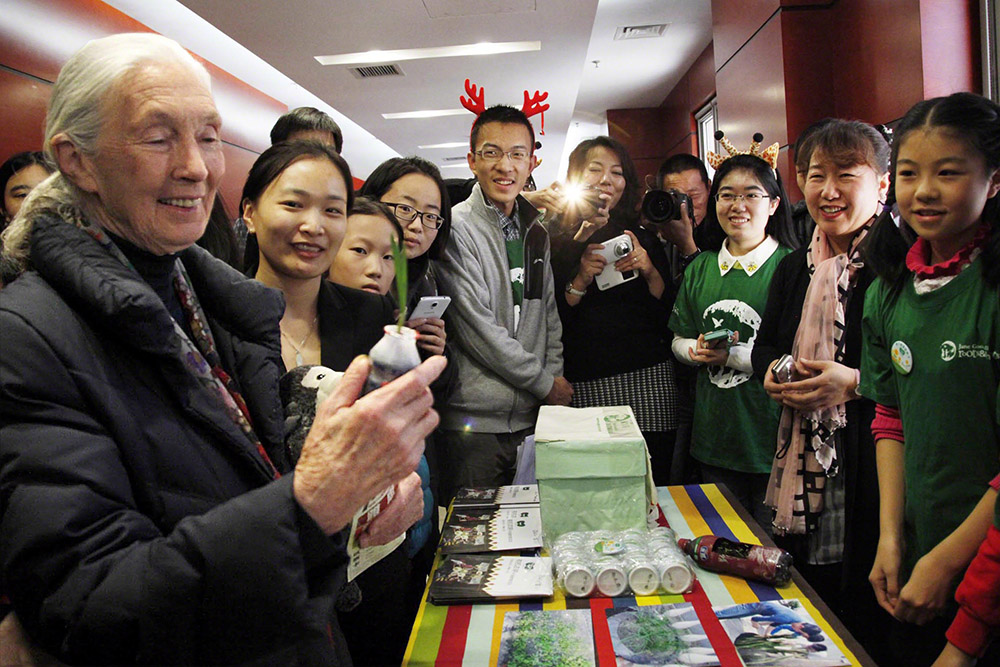
“Last time I was there, so many people came up to me and said, ‘Of course we care about the environment, we were in your Roots and Shoots programme when we were in primary school.’ People in government have told me that the programme has helped change the attitude in China towards the environment and animals. And I’ve seen that change, but only recently realised how much Roots and Shoots has had to do with that.” Today, China counts more than 2,000 Roots and Shoots groups.
It is the youngest generations, Goodall says, that motivate her to continue her work, in spite of her age. “There are times, when I think, come on, how much longer can we keep on fighting? Then I remember that I have grandchildren, who will probably have their own families, and I think, no, we have to go on. We just have to make change.”
|
Her role now is the ensure people do not lose hope. “I believe we have a window of time, but if we don’t get together and realise that each and every one of us can make a difference, it will be too late,” she says. “CEOs and people in government can make major decisions that affect hundreds of thousands of people – they just need to think about the future, instead of the next shareholders meeting. We have to have a very radical change in attitude, if we care about our future generations.”
This article was written by Bartosz Brzezinski, the Editorial Coordinator at Capacity4dev. Banner image © Michael Neugebauer/The Jane Goodall Institute.

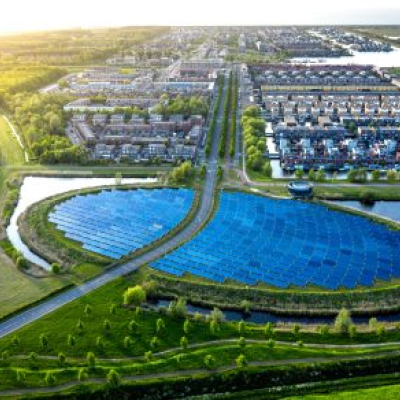


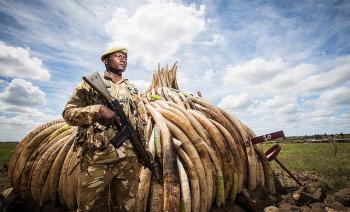

Log in with your EU Login account to post or comment on the platform.